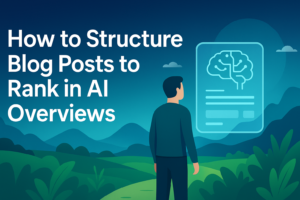Search engine optimization (SEO) is a critical strategy for any business looking to generate leads online. By optimizing your website to attract organic traffic, you can convert visitors into valuable leads. In this blog, we will delve into key SEO techniques that can help you achieve this, focusing on keywords, on-page SEO, and link-building strategies.
Understanding SEO and Its Importance for Lead Generation
SEO is the practice of improving your website to increase its visibility when people search for products or services related to your business on search engines like Google. The higher your site ranks in search results, the more likely you are to attract visitors. The ultimate goal is to convert these visitors into leads and, eventually, customers.
When done correctly, SEO not only drives traffic to your website but also targets the right kind of traffic—people who are already interested in what you have to offer. This makes SEO an incredibly powerful tool for lead generation.
Keywords: The Foundation of SEO
Keywords are the terms and phrases that people use when searching for information online. They are the foundation of SEO because they help search engines understand the content of your website and match it with relevant search queries.
Finding the Right Keywords
- Brainstorming: Start by listing words and phrases related to your business. Think about what potential customers might type into a search engine when looking for your products or services.
- Keyword Research Tools: Use tools like Google Keyword Planner, Ahrefs, or SEMrush to find keywords that have high search volume and low competition. These tools can provide insights into what people are searching for and help you identify valuable keywords.
- Long-Tail Keywords: Focus on long-tail keywords, which are more specific and less competitive than short, broad keywords. For example, instead of targeting “shoes,” target “women’s running shoes for flat feet.”
Implementing Keywords
Once you’ve identified your keywords, strategically incorporate them into your website. Here are some key areas to focus on:
- Title Tags: The title tag of a webpage is a crucial ranking factor. Ensure each page has a unique title tag that includes your primary keyword.
- Meta Descriptions: Although meta descriptions don’t directly impact rankings, they influence click-through rates. Write compelling descriptions that include your primary keyword.
- Headings: Use keywords in your headings (H1, H2, H3, etc.) to help search engines understand the structure and content of your page.
- Content: Naturally integrate keywords into your content. Avoid keyword stuffing, which can harm your rankings. Aim for a natural, readable flow.
On-Page SEO: Enhancing Your Website’s Content and Structure
On-page SEO involves optimizing individual pages on your website to rank higher and earn more relevant traffic. Here are some key aspects to consider:
High-Quality Content
Content is king in SEO. Search engines prioritize websites that provide valuable, relevant, and high-quality content. Here are some tips for creating content that attracts and converts leads:
- User Intent: Understand the intent behind the keywords you’re targeting. Are people looking for information, making a purchase, or comparing products? Tailor your content to meet these needs.
- Engaging and Informative: Create content that is engaging, informative, and provides value to your audience. Use a mix of text, images, videos, and infographics to keep visitors engaged.
- Regular Updates: Regularly update your content to keep it fresh and relevant. This not only improves user experience but also signals to search engines that your site is active.
Mobile Optimization
With more people using mobile devices to browse the internet, it’s crucial that your website is mobile-friendly. Google uses mobile-first indexing, meaning it predominantly uses the mobile version of your site for ranking and indexing. Ensure your website is responsive, loads quickly, and provides a good user experience on all devices.
Page Speed
Page speed is a significant ranking factor. Slow-loading pages can lead to high bounce rates, negatively impacting your SEO and lead generation efforts. Use tools like Google PageSpeed Insights to analyze your site’s speed and make necessary improvements, such as optimizing images, leveraging browser caching, and minimizing code.
Internal Linking
Internal linking helps search engines understand the structure of your website and the relationship between pages. It also distributes link equity across your site. Use internal links to guide visitors to relevant content, keeping them engaged and increasing the chances of conversion.
Link-Building Strategies: Building Authority and Trust
Link building is the process of acquiring hyperlinks from other websites to your own. These links act as “votes of confidence” for your content, signaling to search engines that your site is trustworthy and authoritative. Here are some effective link-building strategies:
Quality over Quantity
Focus on acquiring high-quality backlinks from reputable websites. A few links from authoritative sites are more valuable than numerous links from low-quality sites.
Guest Blogging
Guest blogging is a great way to build backlinks while establishing yourself as an authority in your industry. Reach out to reputable blogs and offer to write valuable, relevant content in exchange for a backlink to your site.
Broken Link Building
Identify broken links on reputable websites and offer your content as a replacement. This helps the website owner fix their broken links while earning you a valuable backlink.
Content Marketing
Create high-quality, shareable content that naturally attracts backlinks. This could be in the form of blog posts, infographics, videos, or research reports. Promote your content through social media and outreach campaigns to increase its visibility.
Partnering with Influencers
Collaborate with influencers in your industry to create and share content. Their endorsement can drive traffic to your site and generate valuable backlinks.
Conclusion: Bringing It All Together
Optimizing your website for lead generation through SEO involves a combination of keyword research, on-page SEO, and link-building strategies. By focusing on these areas, you can attract organic traffic, engage visitors with valuable content, and convert them into leads.
Remember, SEO is a long-term strategy. It requires continuous effort and adaptation to stay ahead of changing algorithms and market trends. By staying committed to providing value and optimizing your site, you can build a robust online presence that attracts and converts leads effectively.

vetrivel is an accomplished SEO and digital marketing expert with 5 plus years of experience. dedicated to providing readers with informative and engaging content.




